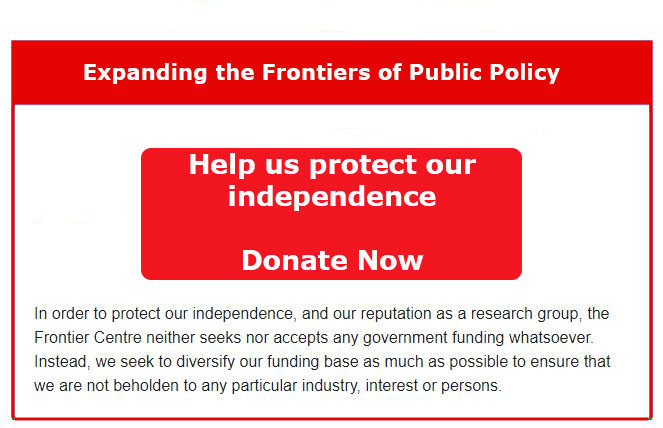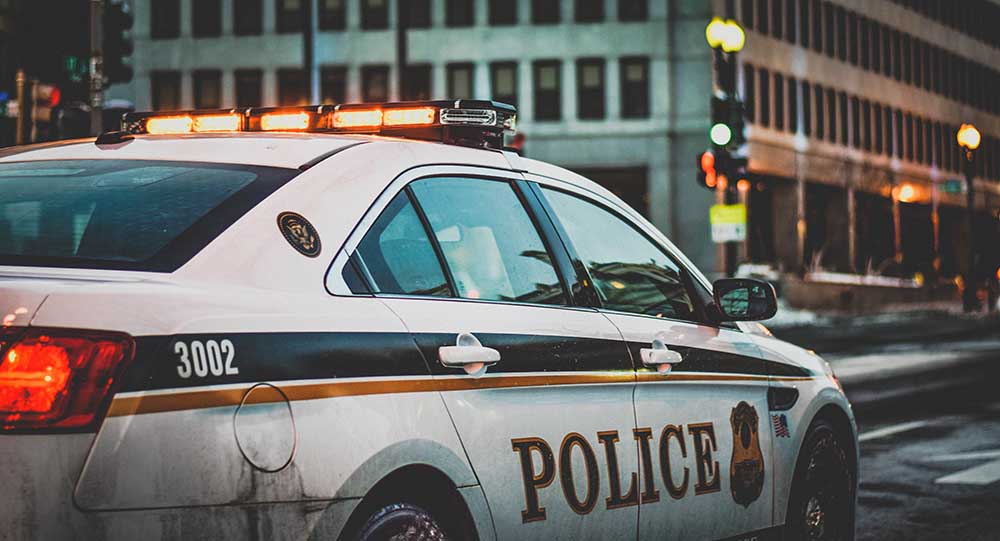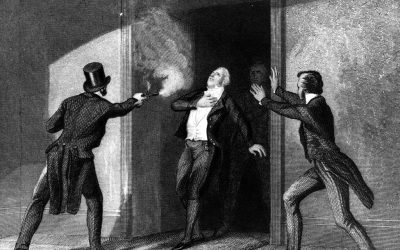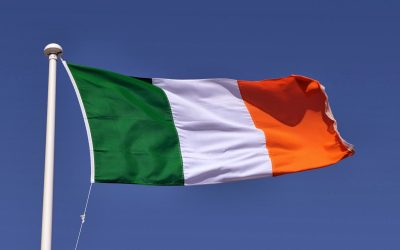Policing is confronted with a legitimacy crisis. Mass incarceration, high-profile incidents involving seemingly unnecessary uses of force by police officers, together with profound racial and socioeconomic disparities have prompted deep criticisms from across the socio-political spectrum.-
The present drivers for police reform have entered a critical period. A sufficient degree of mobilization has been achieved to effect self-reflection within policing as well as forced reform. However, despite widespread mobilization, reform may remain elusive because the frameworks for reform remain unclear, or too narrowly focused on incident-based grievances. Substantive and lasting reform requires an understanding of the systemic foundations of modern policing that developed long before the current crisis and coordination across various drivers, within and outside policing.
For instance, it is helpful to keep in mind that policing is founded in the contradiction between an oath of secrecy and the doctrine of separation of police and politics on the one hand and the requirement to be accountable to the public on the other; and complicated by an adversarial system (criminal justice system) based on risk management and accountability.
While essential to a democratic society, this adversarial culture has also been the source of insularism and protectionism. These types of structural contradictions and systems of adversarial engagement have influenced the development of powerful and enduring groupthink within policing.
Many of the grievances of the pro-reform movement stem from the disproportionate policing of marginalized communities and the seemingly unnecessary, sometimes deadly, use of force. At the heart of this grievance is the seeming lack of accountability of errant officers.
Reform, therefore, ought to include examination of police accountability and transparency; keeping in mind that transparency is not accountability or accountability is not transparency. Furthermore, reform necessitates an exploration of the systemic protections that contribute to a culture of secrecy; a culture that now extends systemic protections to systems that undermine transparency and accountability; most apparent and controversial when it involves incidents of misconduct. By protectionism I mean the systems or processes, including cultural expectations that hinder how misconduct is detected, managed, and reported.
The first level of protection is cultural, popularly known as the blue wall of silence. This is the blue code, a code that differentiates the ‘us’ from ‘them’, the wall of silence, and a shield for protecting one’s own first. It is the ethic of self-protection that prevents officers from speaking up, challenging, or holding fellow officers accountable. It is a norm within which silence, avoidance, or tolerance becomes the accepted modes of dealing with uncomfortable and unacceptable situations.
John Klein in his paper on the ethical analysis of the blue wall notes the prevalence and significance of this phenomenon as a challenge to police accountability and transparency:
Hardly any major public inquiry into police misconduct has failed to mention what is variously known as the blue wall, code, curtain, veil, or cocoon of silence or “reluctance” that has hampered such inquiries or the unsuccessful prior inquiries that have now led to the major public one. Limiting ourselves to a few from the last three decades-the Knapp and Mollen Commissions in New York, the Christopher Commission in Los Angeles, the Fitzgerald Inquiry and the Wood Royal Commission in Australia-we find that all draw attention not only to the fact of a “blue wall” but also to its corrosive and destructive effects, and these not only on the inquiries themselves, but also more generally on the integrity of the police function.1
This cultural perspective is conducive to a strong sense of guardianship, of a moral imperative that can inspire responses believed to be “the right thing to do” as opposed to what is required and expected; a moral guardianship wherein right and wrong become blurry, subjective, and prone to expansionist enforcement.
Despite the end of de jure segregation and discrimination, the de facto effects of discrimination and racism have persisted. The war on drugs, zero-tolerance policing, carding, and the not so long ago official policies for the assimilation of First Nations peoples placed police officers at the sharp end of the spear. Officers did not institute such policies; they were, however, expected to enforce them, excel at their duties, and even be sanctioned and rewarded for their proficiency or lack thereof in executing these policies. The systems that created and supported these policies, the performance measurements that incentivized dysfunctions were systemic, but accountability and liability was always directed at the front-line worker.
These types of policies, and their management, have contributed to a sense amongst the rank and file that they have been placed in the difficult position of doing what is right, having to make the spontaneous life and death decisions, which then become subject to second-guessing and Monday morning quarterbacking by management, the courts, and the public. These sentiments are reflected in a uniquely police lexicon: better to be judged by one than carried by six, lobotomy course, slaughter one and educate a thousand, precision policing, the war on drugs; terms that reflect self-protectionism.
This is the culture that gives rise to a groupthink wherein policing is viewed as a unique profession, a vocation unlike any other, a vocation difficult for outsiders to understand. There is a sense that police officers are the good guys in the struggle against bad guys; but a world in which the good guys are constrained by-laws and rules, their right hands cuffed behind their backs, that the courts set against them, and the public unappreciative of their sacrifices nor able to understand what is good for them. This is the moral imperative of a thin blue line that separates order from chaos.
Cultural influences lend to a sense that police officers are not only law enforcers but also enforcers of “justice”. As noted in an earlier paper, when police are faced with situations where doing what is considered a morally right thing but requiring the breaking of department rules, by a ratio of 57% to 40% officers say they would advise a fellow officer to do the right thing rather than follow the rule.2 This type of culture is pervasive and permeates all ranks and units.
Despite several decades of professionalizing policing, expanded training, diversification of membership, improved remuneration and benefits, and community and stakeholders engagement, the blue wall remains a challenge for reform. It is a culture that demands conformity and assures complicity. Even when things go wrong, sometimes terribly wrong, it is expected that everyone will do their part in the circling of the wagons. This is the subculture, which at least in part, accounts for the fact that so often officers are seen standing-by while a colleague engages in misconduct.
And when these errant officers are found out, few, including their colleagues, seem surprised by their misconduct. Almost everyone knows the bad apples, and yet, again and again, they seem to fall from the tree of justice leaving terrible ripples of damage to the trust, integrity, and reputation of those left behind.
There can be no better form of accountability than a culture that demands adherence to duty, to professional conduct, and self-regulation. Understanding police culture and the drivers of police culture is beyond the scope or intent of this paper; suffice it to recognize that effecting cultural change is crucial for reform, the advancement of policing, and for the betterment of lives of police officers themselves.
The second level of protection arises from legal constraints. Requirements for disclosing allegations, investigation, and disciplinary actions are often protected by Charter rights and procedural justice.
The Innocence Project, responding to hundreds of cases of wrongful conviction across the United States and Canada notes:
Often, when police misconduct is uncovered in a wrongful conviction case, a subsequent review of that officer’s other cases reveals several more wrongful convictions and a litany of complaints related to street encounters with law enforcement. Unfortunately, laws in half the states permit the disciplinary history of law enforcement to remain confidential, meaning by the time this history of misconduct is discovered, communities may have endured preventable abuse on the streets while others may have been wrongfully incarcerated for years. In some states, the law explicitly bars these records from public view, while in others, police agencies hide these records under ambiguous legal precedents, making true accountability impossible.3
Many of the challenges of disclosure were articulated in the 2003 report prepared by the Honourable George Ferguson on the Review and Recommendations Concerning Various Aspects of Police Misconduct in the Toronto Police Service. Not much has changed since that report in which Honourable George Ferguson noted:
Possession or production of police personnel records has presented particular problems. Where the defence has requested such records either by subpoena or by application for disclosure, the Ontario Courts have overwhelmingly held that such records are “third party records” within the meaning of R. v. O’Connor. Requests for such records, irrespective of the wording of the subpoena or application, are subject to the two-stage process described in O’Connor. Again, in the vast majority of these cases, the Courts have held that the defence has not met the test required by O’Connor and the access to the records is denied. This is equally the result whether the subpoena or application is for police “personnel” records, “discipline” records, “complaint” records, “Internal Affairs” records, or a combination of any or all of these records.4
This continues to be a significant challenge to transparency and accountability. As Honourable George Ferguson noted:
These decisions, although correct in law, create an unsatisfactory state of affairs for everyone: the police, the Crown, the defense, and the judiciary. While the criminal record of a civilian material witness for perjury would obviously be of relevance to the accused and, therefore, be clearly disclosable, a Police Services Act conviction for “deceit” would be, under the current regime, beyond the grasp of the defence. This is so even if the investigating officer feels that the witness officer’s deceit conviction might be relevant.5
In the United States, New York Governor Andrew Cuomo, on June 12, 2020, signed the repeal of 50-a into law; a bill that had previously allowed law enforcement to shield police misconduct records from the public. Disciplinary records are now publicly disclosable, increasing systemic accountability through transparency.
This new transparency has revealed several dozen officers with multiple allegations of misconduct. Amongst the top ten New York Police Department officers with the most allegations against them are two officers with 75 allegations against earning upwards of $189,000 and $144,000 each, two officers with 73 allegations earning upwards of $200, 000 and $248,000 each, one officer with 72 allegations earning upwards of $248,000, two officers with 65 and 63 allegations earning $199,000 and $188,000 respectively, two officers with 56 allegations earning $151,000 and $175,000, and a tenth officer with 50 allegations and annual earnings upwards of $195,000.6
According to the Innocence Project, it is not uncommon for officers with a history of misconduct, which can include incidents of racial bias, to be connected with cases of wrongful conviction. Police services have been reluctant to admit to systemic racism, and only recently moved to recognize factors that may lead to unintended signals, attitudes, and cultures of enforcement.
These officers’ records lend credence for reform and an undeniable need for reassessing the procedural and legal protections that hinder transparency and accountability; not an unreasonable expectation given that under similar circumstances, other professionals, including teachers, nurses, or doctors, would not be allowed to continue to have contact with their students or patients.
Management offers a third level of protectionism. Complaints against the police and allegations of police misconduct have historically been investigated and managed by police-led agencies (i.e., “Professional Standards” or “Internal Affairs” bureaus). There has, only in recent decades, been a movement towards external review in many Western nations, including Canada, where civilians have become increasingly involved in the administrative oversight, management and investigation of alleged police misconduct and complaints against the police.
All police services have units that receive and investigate complaints from the community about officer misconduct. Services also have internal investigations units that investigate more serious criminal conduct and corruption complaints against members. When matters become complicated, or conflict of interest is perceived, police agencies cede their investigations to another police service. Nonetheless, it is still police investigating police and the real or perceived conflicts resulting from that are apparent.
There is a strong commitment to demonstrating that police officers can look after their own bad apples; a commitment strengthened by concern that misconduct not only implicates the involved officer but all previous investigations in which the officer may have had involvement. Misconduct, therefore, poses serious and potentially costly risk management challenges favouring quiet resolution, perhaps involving non-disclosure agreements. Complainants who have signed non-disclosure agreements are bound to remain quiet, without whose cooperation it is impossible to know how many complaints have been settled, their context, or the terms of settlement.
There is no central database of police misconduct investigations or outcomes, in Canada or the United States. How many misconduct cases occur every year, how they are resolved, and the penalties remain clouded in mystery. Further, how individuals with prior misconduct charges are assigned duties, how progressive allegations are sanctioned are also not known.
The problem of concealed police misconduct is perhaps the second most important issue for police reform. As a tragic example of how misconduct can change lives, the Houston’s district attorney has concluded that Gerald Goines, a narcotics officer with the Houston Police Department, likely lied about a drug deal for which he arrested George Floyd in 2004, leading to Floyd’s conviction and incarceration for 10 months. Goines, has also been charged with lying to obtain the search warrant that led to a deadly raid last year, and is now the subject of a larger investigation into thousands of cases he was part of during his assignment to the narcotics squad. The Minneapolis police officer who killed Mr. Floyd earlier this year had a record of 18 disciplinary complaints which only recently came to public attention.7
Given the protection of the blue wall, it is very likely, as with crime statistics that are a reflection of enforcement and crimes reported to police, that known misconduct cases only represent a portion of actual misconduct. Despite the blue wall, police officers don’t want bad apples amongst their ranks; the system and culture, however, remains an obstacle to excising rotten apples.
A fourth level of protection arises from Police Service Boards. In Canada, provincial governments and municipalities, mandated by the Police Services Act, jointly appoint police Service Boards. While boards are responsible for implementing effective management policies for the police service, they cannot dictate “specific operational decisions” or the “day-to-day operation of the police force”.8 Boards are intended to “act as a buffer between political direction from the government on the one hand and the operational control of police investigations by the chief of police on the other.”9
Police Boards have been reluctant to intervene in matters of officers’ discipline and conduct. The Toronto Police Services Board chair Jim Hart has recently noted in response to The Ontario Human Rights Commission’s report on police reform, that the investigation and discipline of officer conduct is “entirely out of the board’s hands”.10
Although Mr. Hart’s view is understandable given the historical norms around the separation of policing and politics, claiming that it is “entirely out of the board’s hands” is an unnecessary and unfortunate relinquishment of authority. In fact the Police Services Act in Ontario, under Section 38 (1) (e), states a police service board shall establish policies respecting “the handling of discipline within the police service”, a very general authority that begs testing given the popular demand for reform.
It is too easy on the one hand to identify so many of the issues in policing today to be a consequence of systemic issues, and on the other throw up one’s hands and claim that one cannot do anything to correct the failures because they are systemic.
A fifth level of protectionism comes from prosecutors. There is a separation of responsibility between the police and prosecution; police investigate and prosecutors prosecute. While prosecutors in the United States can participate in police investigations, the separation is more definitive in Canada. In Canada the police are responsible for the investigation and preparation of cases, but once presented to the prosecution, the police have no further jurisdiction other than to facilitate disclosure and provide evidence as required by the prosecution.
Despite the separation, there are strong relational transactions between the police and prosecution in both countries. Police and prosecutors are on the same side, both want to effect successful cases, and where informal resolution is warranted (plea bargaining) the prosecutor decides. However, prosecutors know that they depend on the continued cooperation of police witnesses and therefore are more likely than not to collaborate.
Prosecutors are much more likely to accept police witnesses at their word, to quickly resolve cases owing to busy dockets, and overlook minor procedural short cuts. This systemic relationship can contribute to a false sense of protectionism, and sometimes to serious oversight of the types that have resulted in the conviction of falsely accused, or innocent persons.
A sixth level of protectionism occurs at court. There are hundreds of incidents of charges dismissed by the judiciary because officers’ testimony is determined to be unreliable, suspicious, or conceived. When a case is lost because of spurious police testimony the matter generally ends there; it is just another case lost to an adversarial system, to liberal judges, or terrible prosecutors.
A recent review discovered more than 50 criminal cases over the past five years where judges found that police officers had given false or misleading testimony, and where the case against the accused had fallen apart.11 As one former police officer who investigated officer misconduct before becoming a defence lawyer notes, some officers have an “end justifies the means” attitude, a belief that they need to do what needs to be done in order to clean up the streets to help the public.12 There is no record of these cases, and officers are rarely if ever, held accountable by the courts.
Courts and juries also tended to be favourable to officers when officers are accused of criminal charges. There is a reluctance to prosecute or convict officers, and sentences generally tend to be lighter than would be issued to others.
Kristy Parker, who worked for 4 years in the DOJ’s Civil Division, spent 15 years in the Civil Rights Division of the Department of Justice, most recently as a Deputy Chief, and supervised and prosecuted federal criminal civil rights violations, including uses of excessive force by law enforcement officers describes it this way:
Police officers do get the benefit of the doubt that their perceptions and judgments are reasonable and not knowingly wrong, especially in dynamic situations requiring “split-second judgments.” But it’s a prosecutor’s job to explain to jurors that police officers are trained professionals who are expected to make judgment calls and manage risks reasonably. While many police officers and their lawyers will respond to a criminal charge by arguing that they lose their capacity for reason when faced with chaotic circumstances or when they experience fear, the law doesn’t allow them to throw reason out the door. And facing those kinds of circumstances is their job.13
Police associations provide a seventh level of protection. There is a powerful culture of protectionism encouraged by police associations, a culture that guarantees that accused officers can rely on financial, and moral support during their journey through a disciplinary or criminal justice process.
Police are not legally permitted to unionize, none-the-less, police associations yield significant influence and authority and pose a significant challenge to the authority and function of chiefs of police. They can institute work to rule, challenge political leaders, challenge oversight, lobby for or against policies, and influence appointments. This protectionism also, regrettably, provides a degree of safety for errant officers, undermines the authority of oversight, and prevents transparency and accountability.
A recent article in the New Yorker, described the New York City Police Benevolent Association (NYCPBA) president, Patrick Lynch, as someone who believes that his officers are never wrong, that anybody who criticizes them is wrong, mayors are the enemy, and police brass the near enemy. Mr. Lynch even addressed the 2020 Republican Convention, and has openly attacked Joe Biden as a Democratic apologist.14
In 2014, when Mayor de Blasio attended a hospital where two NYPD officers were being treated, Mr. Lynch directed on-duty officers to turn their backs on the Mayor because the NYCPBA considered the mayor’s reforms to be “anti-police.”15 At the officers’ funerals, hundreds of officers again turned their backs on the mayor.
Canada police associations are no different. In 2018 the Toronto Police Association contracted a massive billboard along the Gardiner Expressway in a campaign against the city’s mayor, police chief, and the chair of the Toronto Police Services board. The billboard consisted of a photograph showing a smiling Tory in between Police Chief Mark Saunders and Toronto Police Services Board Chair Andrew Pringle, with the caption “These guys are putting your safety on hold” and included the numbers ‘911,’ appeared to be written out in blood.16
Police associations have negotiated powerful positions and influence. Police association members are, often the first on the scene, following police misconduct or use of force incidents. And officers resort to the advice of their association representative and defence counsel before their unit commanders. Police associations play an important role towards advocacy and wellbeing of members; however, the boundaries and power dynamics, cultural control, politicization, and protectionism should be subject to a reconsideration of their role, impact, and accountability.
Protectionism is understandable and inevitable; however, excessive protectionism, particularly systemic protectionism, harms the great work that good officers do every day. Too often, protectionism serves those who should not be protected and harms the image, integrity, and legitimacy of those who quietly go about their business of keeping us safe from harm, in ways that most of us will never appreciate.
Protectionism creates unfair advantages for those who don’t deserve it, for those who have failed their oath and profession, and those who are outliers to the honour and courage the majority of front line policing exhibit daily.
The reform movement risks losing legitimacy at a moment when there is an opportunity to achieve several mutually beneficial changes, for both the police and for those they serve. Unnecessary and senseless property damage and violence, undefined and unreasonable demands for police defunding, and unreasoned hostilities are counterproductive. Instead, reformists should look to reasoned and legitimate demands for change; amongst these may be the systemic and cultural barriers to transparency and accountability.
Anil Anand is a Research Associate with the Frontier Centre for Public Policy. Anil served as a police officer for 29 years; during his career some of his assignments included divisional officer, undercover narcotics officer, and intelligence officer. He has worked in Professional Standards, Business Intelligence, Corporate Communications, the Ipperwash Inquiry (judicial public inquiry), and Interpol.
[show_more more=”SeeEndnotes” less=”Close Endnotes”]
- Kleinig, John. “The blue wall of silence: An ethical analysis.” International Journal of Applied Philosophy 15, no. 1 (2001): 1-23.
- Morin, Rich, Parker, Kim, Stepler, Renee, and Mercer, Andrew. “Behind the Badge”, Pew Research Center, https://www.pewsocialtrends.org/2017/01/11/police-culture/ Accessed; August 24
- Brown, Rebecca. “It’s Time to Make Police Disciplinary Records Public”, Innocence Project, July 2, 2020, https://www.innocenceproject.org/its-time-to-make-police-disciplinary-records-public/ Accessed: August 25, 2020
- The Honourable George Ferguson, Q.C. “Review and Recommendations Concerning Various Aspects of Police Misconduct”, Volume 1, January 2003 http://www.torontopolice.on.ca/publications/files/reports/ferguson1.pdf Accessed: August 18, 2020
- Ibid.
- Chalbi, Mona. “Which NYPD officers have most complaints against them?”, The Guardian, August 4, 2020, https://www.theguardian.com/us-news/datablog/2020/aug/04/new-york-police-department-allegations-complaints Accessed: September 12, 2020
- Brown, Rebecca. “It’s Time to Make Police Disciplinary Records Public”, Innocence Project, July 2, 2020, https://www.innocenceproject.org/its-time-to-make-police-disciplinary-records-public/ Accessed: August 25, 2020
- Ibid
- Sossin, Lorne. “The oversight of executive police relations in Canada: The Constitution, the courts, administrative processes and democratic governance.” Ipperwash Inquiry (2004).
- Hart, Jim. “Police Reform in Toronto: Systemic Racism, Alternative Community Safety and Crisis Response Models and Building New Confidence in Public Safety” Toronto Police Services Board., August 10, 2020 (Page 20), https://tpsb.ca/consultations-and-publications/items-of-interest/send/29-items-of-interest/630-police-reform-in-toronto-august-2020-report Accessed: September 12, 2020
- Davis, Stephen. “Judges have tossed dozens of cases in past 5 years over credibility concerns with police testimony”, CBC News, November 8, 2019, -testimony-court-cases-investigation-1.5352086 Accessed: September 12, 2020
- Ibid
- Parker, Kristy. “Prosecute the Police”, The Atlantic, June 13, 2020, https://www.theatlantic.com/ideas/archive/2020/06/prosecutors-need-to-do-their-part/612997/ Accessed: September 12, 2020
- See: New York City Police Benevolent Association web site at https://www.nycpba.org
- Finnegan, William. “How Police Unions Fight Reform” The New Yorker, August 10, 2020 Issue, https://www.newyorker.com/magazine/2020/08/03/how-police-unions-fight-reform Accessed: August 26, 2020
- Wilson, Codi. “Police union uses new billboard to slam mayor, police chief, board chair”, CP24 News, January 30, 2018 https://www.cp24.com/news/police-union-uses-new-billboard-to-slam-mayor-police-chief-board-chair-1.3781211 Accessed: August 26, 2020
[/show_more]
Photo by Matt Popovich on Unsplash.



